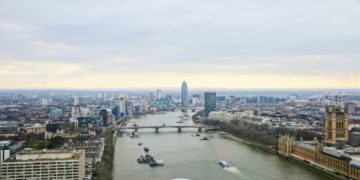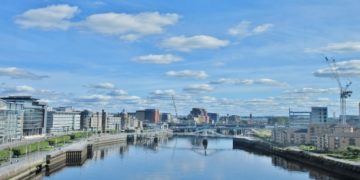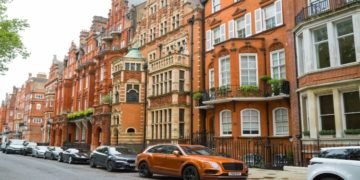London’s property market has always had a way of attracting attention. Whether it’s the allure of historical architecture rubbing shoulders with glass-and-steel towers, or the ever-evolving tapestry of cultures and communities—it remains a magnet for both local and international buyers. And despite whispers of a slowdown, the capital continues to generate intrigue. Because when it comes to real estate, London never quite goes quiet.
Still, the dynamics shift. Trends emerge. Prices rise (or plateau), neighborhoods gentrify, and developers reimagine unused plots into sleek, investment-ready spaces. So, what’s happening on the ground now?
Shifting Expectations, Steady Demand
There’s been no shortage of speculation about how Brexit, the pandemic, and shifting interest rates would reshape the London market. And while the capital hasn’t been entirely immune to these pressures, it’s proven resilient in ways some doubted.
One key shift? Buyer behaviour. There’s more scrutiny, more emphasis on value—and not just financial. Location, amenities, long-term potential… these matter more than ever. Buyers are savvy, and many are looking beyond the traditional hotspots. Zones 3 and 4 are gaining momentum, with areas like Barking Riverside and Colindale offering strong yields without the central London price tag.
But don’t count out Zone 1 just yet. Prime postcodes like Kensington, Mayfair and Fitzrovia still hold magnetic appeal for high-net-worth buyers. What’s changed is the approach: less of a frenzied gold rush, more of a strategic calculation.
New-Builds, Regeneration, and Quiet Competition
In the current landscape, one of the most notable developments (pun somewhat intended) is the continued rise of regeneration-led investment. These aren’t just new builds springing up at random—they’re part of wider urban renewal schemes, often backed by significant infrastructure upgrades.
Elephant Park in Southwark, for example, has transformed a once-overlooked area into a highly desirable urban hub. Meanwhile, the Nine Elms regeneration—years in the making—is finally hitting its stride, with proximity to the US Embassy and Battersea Power Station driving demand.
For those monitoring the market closely, this opens doors. The opportunity to browse featured London properties in these emerging micro-neighbourhoods is as much about timing as location. Investors who act before a full area revival often find themselves well-positioned down the line.
And while high-street estate agents remain busy, much of the competition is quieter now. International investors—particularly from Asia and the Middle East—have returned with strategic intent, not sheer volume. That means less heat, but not necessarily less movement.
The Tech Effect and Tenant Priorities
Of course, investment isn’t just about purchase—it’s also about rental return. And here’s where tenant expectations are reshaping the equation. The post-pandemic world has left renters demanding more from where they live: proximity to green space, reliable high-speed internet, co-working lounges, even wellness facilities.
Build-to-rent developments are increasingly accommodating this shift. Many come pre-loaded with tenant-friendly features—on-site gyms, concierge services, communal areas that feel more Soho House than student digs. It’s a far cry from the draughty flatshares of the past.
Interestingly, tech companies expanding their London footprints—Google’s King’s Cross campus, Apple’s Battersea HQ—are also driving demand in nearby zones. The professional demographic they attract wants sleek, functional homes with strong transport links, and they’re willing to pay for it. That creates a ripple effect; landlords and investors who anticipate these shifts can command stronger yields.
Prices, Policy, and the Road Ahead
So, what about the numbers?
London’s average house price sits significantly higher than the national average, but it’s important to look past the headline figure. Micro-markets vary wildly. While areas like Camden and Hackney saw double-digit annual growth during the post-lockdown surge, others have levelled out or seen mild corrections.
Government policy also plays its part. Stamp duty reforms, potential rental caps, and even local council planning decisions can have knock-on effects for investors. Right now, the market rewards those who stay informed and adaptive rather than those who chase quick wins.
That said, the long view remains compelling. London continues to be a global financial hub, a cultural powerhouse, and—crucially—a city in constant flux. Real estate here isn’t static; it evolves alongside the people and policies that shape it.
Final Thoughts: Calculated Moves Win the Day
London property has never been about certainty. It’s about potential. The market may not be booming in the headline-grabbing way it has in past decades, but it’s very much alive—and possibly, in some ways, healthier for it.
Investors and buyers now operate in a more considered climate. That’s a good thing. It encourages depth over dazzle. And those who take the time to understand the nuances—to look beyond postcode prestige and dig into regeneration schemes, tenant trends, and long-term infrastructure—are more likely to come out ahead.
In short: what’s on the market right now in the capital isn’t just bricks and mortar. It’s a reflection of shifting priorities, smarter strategies, and the quiet confidence that London—though ever-changing—continues to hold its own.










































































